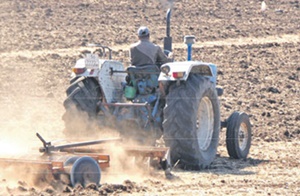Économies d'énergie dans la production de blé tendre (Triticum aestivum) dans les systèmes de terres arides
Résumé
Les objectifs de cette étude consistent à évaluer la consommation d’énergie directe et indirecte lors la production du blé tendre. Pour cela, une enquête a été menée auprès de 81 exploitations agricoles réparties en 4 catégories. Les résultats indiquent que la consommation d’énergie par hectare varie de 9,7 à 11,1 GJ. Les fertilisants, les semences et carburant représentent respectivement 43,8%, 27,7% et 18,6% de la consommation totale. Quant à la consommation spécifique, elle varie de 3,05 à 3,37 MJ/kg. En tenant compte de ces résultats et aux attitudes des agriculteurs, des équations de prédiction de la consommation d’énergie ont été établies. Les résultats montrent que la réduction de la dose de semis et de la consommation en carburant mènent à une économie d’énergie variant de 8,6 à 20,6 % .Ce potentiel représente l’équivalent de 29,6 % de la consommation du carburant dans la production du blé tendre au Maroc. La consommation spécifique pourrait également être réduite de 19,6 à 22,9% .L’adoption de ces pratiques réduira l’émission des gaz à effet de serre de 119,1 Kte CO2 par an.
Mots-clés: Blé tendre, Énergie, Gaz à effet de serre
Téléchargements

Publié-e
Comment citer
Numéro
Rubrique
Licence

Revue Marocaine des Sciences Agronomiques et Vétérinaires est mis à disposition selon les termes de la licence Creative Commons Attribution - Pas d’Utilisation Commerciale - Partage dans les Mêmes Conditions 4.0 International.
Fondé(e) sur une œuvre à www.agrimaroc.org.
Les autorisations au-delà du champ de cette licence peuvent être obtenues à www.agrimaroc.org.

